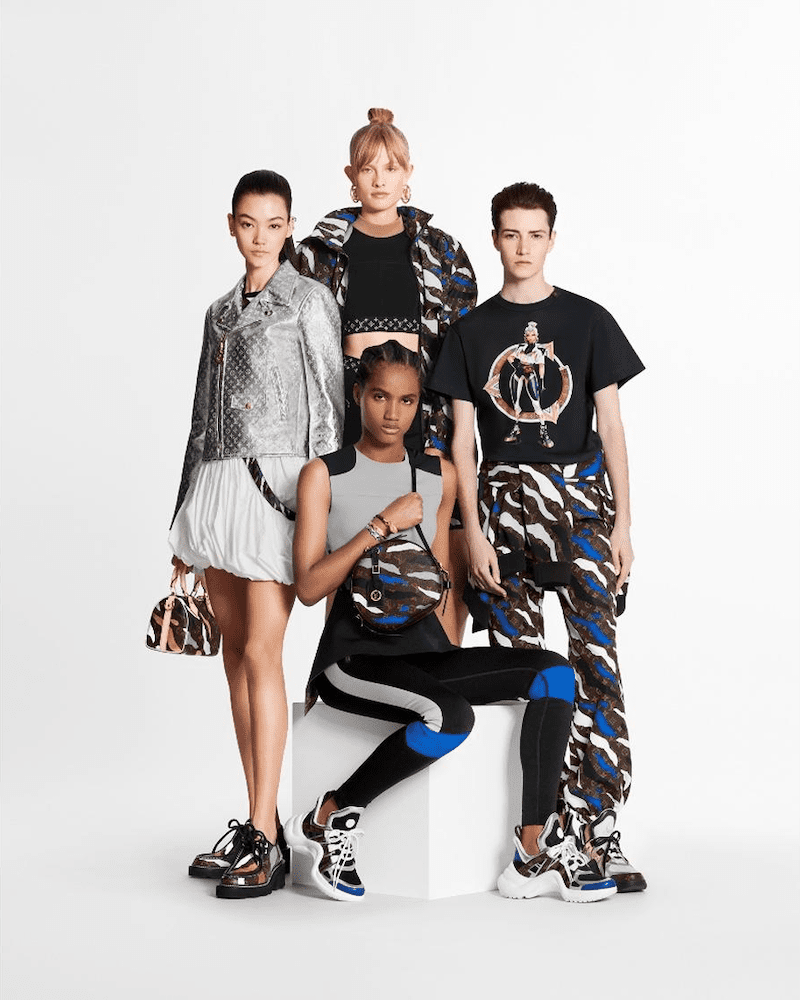Get in the Game
Three avenues brands can take to engage a diverse & growing demographic
Gaming around the world continues to expand rapidly due to many factors: the surge of mobile gaming, advances in virtual reality, the popularity of live streaming services (like Twitch), and the release of next-gen gaming consoles, including the PlayStation 5 & Xbox Series X. As uncovered & discussed in our 2020 Spring Trend report, the lines between digital and physical realities are becoming more blurred, so how can brands get in the game?
Here are some quick facts on the gaming industry today:
Growing Up: 75% of American households have at least one gamer, and these aren’t just young kids;65% of American adults play video games.
Not a Phase: On average, gamers are 33 years old & have been playing for 14 years!
Worldwide: Over 70% of internet users game on some device in every region of the world.
Market Growth: The $158 billion market is predicted to continue its rapid growth, some estimating the market to reach over $300 billion by 2025.
Myth Busted: Overall, the demographic of men vs. women total gamers is split about 50/50.
COHO has identified three points of entry that brands can take to engage the gaming community in an authentic way:
1. The Physical World (Now)
While the physical world may be the most familiar way for brands to get in touch today, it can still be effective if done properly. The gaming world is a community where most gamers spend their time playing with others & communicating online. Rather than focusing on commonplace ads during games, brands should have a different question in mind: how can we create a unique experience for the gaming community while remaining authentic to our brand? Hosting an event or collaborating with gamers to create a gaming competition is one way. For example, Walmart recently opened five eSports Arenas inside their stores, allowing gamers to embrace their own space. Walmart now has weekly tournaments and has created a unique community within select Walmart stores.
Many brands have already taken to sponsoring eSport gamers & streamers. Still, instead of a simple sponsorship, brands should embrace taking it a step further by creating limited-time offerings, exclusive events, and investing more in eSport teams or streamers in unique ways. The world of gaming can provide brands an opportunity to tap into a new diverse audience in an engaging way. Take Louis Vuitton: a brand famously known for its link to gaming culture, right? Definitely not. However, to reach a new audience in a unique way, the high-end apparel brand leveraged its brand equity and created a clothing capsule that the gaming community could engage with. The clothing capsule took the form of a collaboration with one of the largest eSport games, League of Legends, with all items selling out almost immediately. Louis Vuitton expanded its collection and collaborations into the digital space, leading us to our next brand opportunity.
Louis Vuitton limited clothing capsule with League of Legends © Louis Vuitton
2. The Digital Entrance (Next)
Brands continue to have a larger presence within digital in-game experiences, from personal brands such as Travis Scott’s in-game Fortnite concert to major consumer product goods, including M.A.C. Cosmetics being used to customize makeup on characters in the game Sims 4. With the rise of mobile gaming’s popularity & expansion of ultra-speedy 5G networks, it is a natural step for marketers to begin filling mobile games even more with advertisements that allow them to reach an already engaged consumer. However, as these advertisements increase, it will become more important to speak to these gamers indirectly.
Brands should explore ways to include themselves as part of the game to enhance the experience rather than implementing a frequent & intrusive in-game advertisement for your brand/product. For example, to celebrate the Mercedes-Benz GLA SUV release, Mercedes teamed with Mario Kart 8 to allow gamers to download a GLA Kart and drive it with their favorite Mario Kart character. This is a great representation of more unique & exciting ways to advertise your brand and gain more awareness other than a paid, 30-second advertisement.
Innovation on all gaming platforms will continue to make gaming more realistic. As characters and settings become even more life-like regarding their graphics, branding that appeals to different audiences can further elevate the space. In the game NBA 2K21, gamers have over 20 apparel brand options to clothe their customized player. Certain brand names even carry higher prices, while some clothing options are only available for a limited time. The clothes chosen by that gamer reflect who they are as a person and extend to their online character’s personality.
The addition of gamers’ favorite real-life brands integrated as part of the games they play doesn’t only elevate the authenticity of the game they are interacting with but also brings a new level of excitement for gamers. Brands should look for ways to offer new digital experiences for the gaming community. Not only will it boost brand awareness, but in-game purchases could someday drive brand sales in the real world as well.
Over 12 Million players participated in Travis Scott’s Fortnite “Astronomical” Concert © Epic Games
3. The Fusion of Worlds (Future)
As virtual reality continues to develop in the gaming world & less screen time becomes a point of emphasis & encouragement, new gaming innovations have begun to fill the need to separate games from devices. Brands have also taken notice & created their own products to capitalize on the fusion of worlds. For example, FIFA & Adidas have done this by creating the Adidas GMR insole; the insole allows your soccer cleats to connect to your FIFA game. The data/actions of the Adidas GMR insole chip influences your FIFA player’s statistics in the video game, meaning, the more you play with your shoes in real life, the better your player in FIFA becomes! In Japan, the Super Nintendo World theme park will be coming to Universal Studios in 2021. The Nintendo theme park will allow guests to download an app to connect them to various activities around the park, collecting virtual coins around the park & competing with others at the same time. Real-life activities that once existed only in a video game will have their chance to exist in the real world, and yes, that includes real-life Mario Kart!
How can your brand execute an experience that fuses the digital & physical world? If you are an apparel brand, could your store execute a QR code that unlocks the outfit you purchase in-store as an outfit for your gaming character? Could your brand gamify your retail space for a more engaging & fun customer experience? The possibilities are endless!
Nintendo World is set to open in Japan in 2021 © Super Nintendo World/ Nintendo
The Brand Takeaway:
What is most important to keep in mind is the level of execution your brand can truly pull off; executing in any of these three spaces in a way that adds value to the player’s gaming experience while staying true to your brand values is what will make the biggest impact. Here at COHO, we’re looking forward to the innovations to come in the gaming space, challenging our clients to consider gaming as part of the innovation conversation, allowing them to stay ahead of the game!
Ellen Craven
Ellen Craven, Coho’s Director of Strategy & Innovation, is a provocative thinker and challenger of the status quo. She is constantly in a near-clinical state of consumer empathy and always onto the next insight that will build brands, grow business, and make life a little better for all of us. When she is not strategizing, she's excelling in her other job; swim, tennis, karate, and band mom, or discovering new restaurants with her husband.





